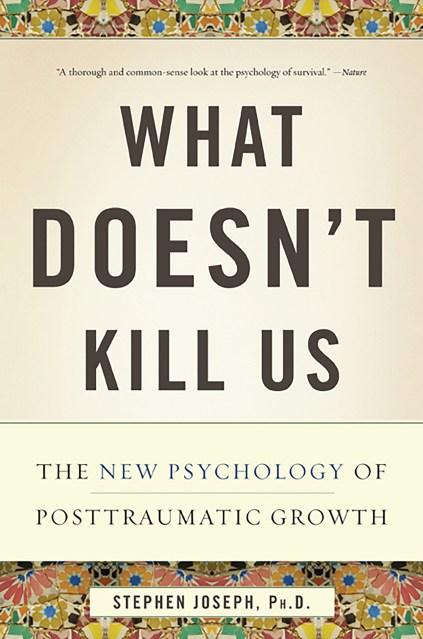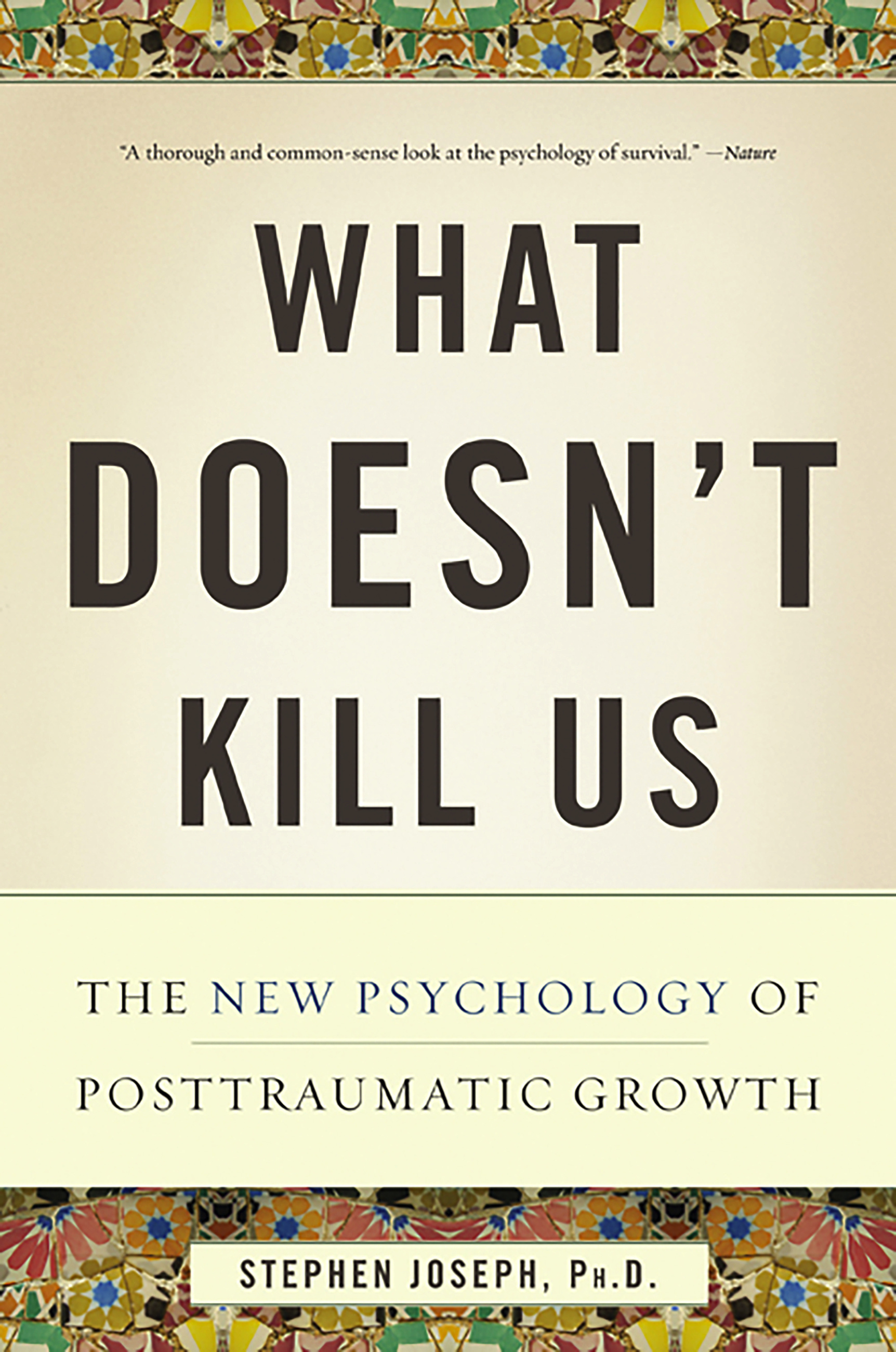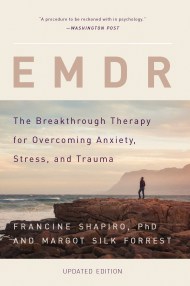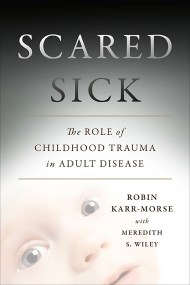Promotion
25% off sitewide. Make sure to order by 11:59am, 12/12 for holiday delivery! Code BEST25 automatically applied at checkout!
By clicking “Accept,” you agree to the use of cookies and similar technologies on your device as set forth in our Cookie Policy and our Privacy Policy. Please note that certain cookies are essential for this website to function properly and do not require user consent to be deployed.
What Doesn’t Kill Us
The New Psychology of Posttraumatic Growth
Contributors
Formats and Prices
- On Sale
- Jan 8, 2013
- Page Count
- 288 pages
- Publisher
- Basic Books
- ISBN-13
- 9780465032334
Price
$19.99Price
$25.99 CADFormat
Format:
- Trade Paperback $19.99 $25.99 CAD
- ebook $11.99 $15.99 CAD
This item is a preorder. Your payment method will be charged immediately, and the product is expected to ship on or around January 8, 2013. This date is subject to change due to shipping delays beyond our control.
Buy from Other Retailers:
-
Donald Meichenbaum, PhD Distinguished Professor Emeritus, University of Waterloo, Ontario, Canada and Research Director of the Melissa Institute for Violence Prevention and Treatment of Victims of Violence, Miami, Florida
"Traumatised individuals have a story to tell, as well as re-author. Professor Stephen Joseph is compassionate, attentive listener and a sensitive and scholarly conveyer of this narrative process. He has ably blended his many years of research and clinical practice into an enlightened story of post traumatic growth. This a book that should be read by all who encountered trauma and those who love and treat them. Kudos to Professor Joseph for providing a needed new direction for the treatment of those who experience [posttraumatic stress disorder] and related challenges. This book is a clarion call for a Constructive Narrative Perspective to psychotherapy, filled with pathos and hope."
Dr Gill Hicks MBE, survivor of the London Bombings, July 7, 2005
"What Doesn't Kill Us — indeed does and can make us stronger as brilliantly presented by Professor Stephen Joseph and lived throughout my every day." -
Dr Kate Hefferon, Senior Lecturer, University of East London and author of Positive Psychology: Theory, research and applications
"This is the book we have been waiting for Stephen Joseph to write. With decades of experience and knowledge, Joseph presents the wonderfully complex world of posttraumatic growth in an accessible and personable way. Not only does the book provide the most-up-to-date research, What Doesn't Kill Us offers tangible approaches to developing growth after trauma; a feat that will be valued by many."
Dr Nigel Hunt, Associate Professor in Health Psychology, University of Nottingham
"This is a caring and thoughtful account, arguing for the normality of post-traumatic stress as a process of adaptation. Professor Joseph presents a personal and positive perspective, showing how people can come through painful experiences and live fulfilling lives.... His THRIVE model provides a coherent approach to helping traumatised people." -
Elaine Iljon Foreman, author of Fly Away Fear: Overcoming Your Fear of Flying
“Convincingly challenging, highly enlightening, and compulsively readable, What Doesn't Kill Us is thoroughly recommended for both those who have and have not experienced trauma. A transformational new perspective.”
Elaine Fox, Ph.D., Professor of Psychology at University of Essex
“What Doesn't Kill Us is an insightful and entertaining account of the new psychology of resilience. Stephen Joseph brilliantly combines personal anecdote with cutting edge psychology to explain why all of us have the capacity to triumph over adversity. A must read if you ever wondered why most of us rebound so well after disaster, What Doesn't Kill Us is an invaluable guide for anyone wanting to know how to cope with trauma.”
Richard Bentall, Professor of Clinical Psychology, University of Liverpool
“In this fascinating book, Stephen Joseph maps out the rarely explored positive consequences of trauma, reminding us that growth is possible even in the most adverse circumstances. Although essential reading for clinicians working with traumatized patients, What Doesn't Kill Us is so accessibly written that it should appeal to anyone interested in the human condition.” -
Terry Waite CBE
“We live in a world in which suffering is endemic. In this book Stephen Joseph sounds a hopeful note. Suffering need not destroy.”
Robert J. Wicks, Professor, Loyola University Maryland, and author of Bounce: Living the Resilient Life
“What Doesn't Kill Us seamlessly combines needed inspiration and the most advanced information about the new psychology of posttraumatic growth for those who have experienced great suffering. Stephen Joseph, one of the leading experts in the world on trauma, resilience, and growth, offers both compelling stories and practical information. What Doesn't Kill Us is a book of wisdom—both for those who have undergone great stress as well as for those who love and treat them. It is psychology at its best: honest, hopeful, helpful, and based on sound serious research. Reading it makes me proud to be a psychologist.” -
Stephen Regel, Honorary Associate Professor/Co-Director Centre for Trauma, Resilience and Growth, School of Sociology and Social Policy, University of Nottingham
"Stephen Joseph's book is inspirational and, not just for the lay reader but also for all therapists, regardless of their theoretical orientation, as trauma in inherent part of their work. It goes far beyond the narrow confines of current clinical approaches to working with trauma and posttraumatic stress and challenges all clinicians to think about what we actually say and do in the consulting room. He takes us along the path of post traumatic growth as an experienced and perceptive guide, opening up many new thought provoking therapeutic possibilities and avenues to facilitate post traumatic growth rather than merely deal with symptomatic change. His chapter on signposts to the facilitation of growth following adversity, through the acronym THRIVE has a simple elegance that everyone can adopt in our current uncertain times. To say that it is essential reading would be an understatement. It is essential as a survival guide to life." -
Vaughan Bell, Institute of Psychiatry, King's College, London
“In an area beset by wishful thinking, Stephen Joseph makes the scientific case for how difficult times can lead to personal growth. What Doesn't Kill Us is a well argued and well evidenced challenge to the idea that trauma is necessarily a curse.”
Publishers Weekly
“Informative and thoughtful.”
Kirkus Reviews
“A sure-to-be-controversial, provocative challenge to prevailing wisdom on how to deal with stress.”
New York Journal of Books
“What Doesn't Kill Us is accessible for all readers.... Well worth the time to read, digest, and utilize in one's daily life.” -
John Harvey, Professor Emeritus of Psychology, University of Iowa
“In What Doesn't Kill Us, Stephen Joseph brings his expertise as one of the world's most prolific and influential scholars of trauma and over two decades of clinical experience to bear in producing a literate and compelling book on growth from and through adversity. The book is replete with powerful story-lines of people who persevered in the face of great pain and loss: From Michael J. Fox to Viktor Frankl we learn how survivors lived Nietzsche's dictum of what doesn't kill you can make you stronger. Joseph gives voice to the non-famous and famous alike as he tells stories of survival and thriving, both in personal and global crises. All the while, the book is highly educational about the dynamics of posttraumatic growth and related concepts. It is a rare feat to produce a book that will appeal and be useful to the general public, as well as scholars and practitioners. Joseph has done so.”
Mick Cooper, Professor of Counseling, University of Strathclyde
“Beautifully written, drawing on leading-edge scientific research to reveal one of humankind's noblest qualities: the capacity to find meaning and growth in the face of near-unbearable suffering.”
Newsletter Signup
By clicking ‘Sign Up,’ I acknowledge that I have read and agree to Hachette Book Group’s Privacy Policy and Terms of Use






